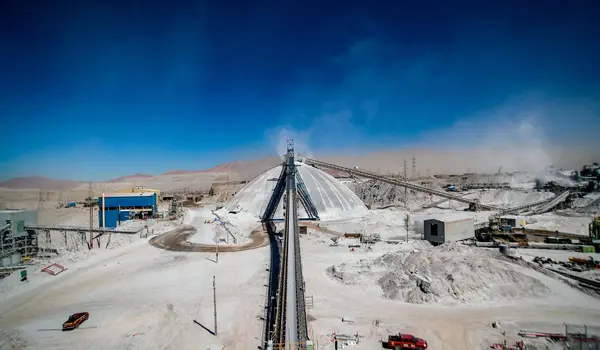The growing demand for nickel, copper, cobalt, and zinc – raw materials for solar panels and batteries – places the mining and metals sector at the forefront of climate change mitigation. But how does the sector fare in terms of achieving the Sustainable Development Goals? To find out, researchers examined global trends in patents related to climate change mitigation technology filed by the mining and metals sectors.
As the world grapples with the ongoing climate crisis, adopting greener technology has become a requirement in all aspects of our lives. Naturally, industries that are critical to our daily lives are integrating such technology into their operations.
All of these are dependent in some way on the mining industry, which extracts and processes the raw materials used to manufacture the majority of green technologies. However, the economic and policy factors driving the mining sector to become more sustainable remain largely unknown.
The goal of CCMT development is to reduce greenhouse gas emissions and our environmental impact. Examining patents filed over time is a good way to see how an industry’s technology evolves. Our team examined patent data from 2001 to 2016 from seven regions to calculate three major indicators of CCMT development in the industry for each region: Priority, Mining, and Scale.
Hidemichi Fujii
Hidemichi Fujii of Kyushu University’s Faculty of Economics in Japan and Andre Yamashita of Lule University of Technology’s Control Engineering Group in Sweden examined trends in global patent applications from the mining and minerals sector to reveal strategies for promoting R&D in mining-related climate change mitigation technology, or CCMT, in a report published in Resources Policy.
They discovered that both the Paris Agreement and raw metal price trends influenced the development of CCMTs in the industry, but the degree of influence varies by country and how much the sector contributes to the country’s economy.
“The goal of CCMT development is to reduce greenhouse gas emissions and our environmental impact,” says study leader Hidemichi Fujii. “Examining patents filed over time is a good way to see how an industry’s technology evolves. Our team examined patent data from 2001 to 2016 from seven regions to calculate three major indicators of CCMT development in the industry for each region: Priority, Mining, and Scale.”
The ‘Priority’ indicator is the number of mining-CCMT-related patents divided by the number of patents in the whole mining industry. That ratio would increase if inventors were prioritizing research into CCMTs.

‘Mining’ is defined as the number of patents related to the mining industry divided by the total number of patents across the board. This number indicates how much inventors are concentrating their efforts into developing technology for the mining industry itself.
Finally, ‘Scale’ is defined as the total number of patents, representing the overall amount of research and development.
“These indicators were used to examine the mining industry in seven major countries and regions: China, Japan, the United States, Europe, Latin America, Australia, and South Africa. The first four have significant patent offices, whereas the last three are significant mining regions” Fujii explains. “Through our research, we discovered several intriguing trends.”
For example, while overall mining patents and mining CCMT patents increased across the board, the rate and pattern of those trends differ depending on whether a country consumes or produces resources. In response to price increases in resources such as rare earth metals and oil, resource-producing regions experienced greater changes in R&D priorities.
Further analysis showed that development of mining CCMT patents in the US, Europe, Latin America, and Australia was facilitated by a relative increase in R&D related to mining technology. Japan and South Africa have increased their focus on R&D for both mining itself and related CCMTs while shrinking the overall scale of their R&D. On the other hand, China and the rest of the world have increased the scale of their R&D, which in turn drives invention of more green technology.
“The year-by-year analysis showed that the Paris Agreement contributed to an overall increase in green technology in the mining sector. Increases in prices of metals contributed to the number of patents for the industry as well,” Fujii states.
The team hopes that their new analysis will assist both countries and industries in implementing effective policies that encourage the development of CCMTs for the industry while maximizing the benefits for all.
“The differences and similarities in R&D strategies can be used to develop country-specific science and technology policies to combat the climate crisis,” Fujii concludes. “At the same time, they can make the best use of capital while also promoting regulations that ensure fair wages based on experience and skill.”
















